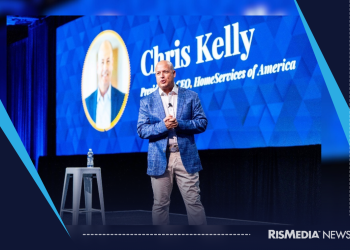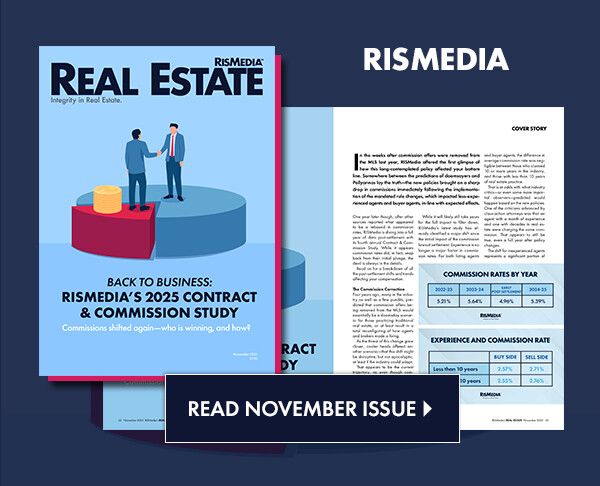 RISMEDIA, March 27, 2010—(MCT)—The word “as-is” can indeed be one scary phrase. Especially when buying a home in today’s market where foreclosures and short sales that need fix-up work are plentiful.
RISMEDIA, March 27, 2010—(MCT)—The word “as-is” can indeed be one scary phrase. Especially when buying a home in today’s market where foreclosures and short sales that need fix-up work are plentiful.
But a little-known Federal Housing Administration (FHA) loan program that’s been around since 1978 can help take the sting out of “as-is.” Only 219 borrowers took advantage of the FHA’s 203k program in 2009. Not that many lending and real estate professionals are aware of the program, say observers.
Last year, Tom Meyer found a classic Oakland, Calif., home built in 1925 near Mills College he liked a lot. As a short sale it was priced right and about half the original asking price. Trouble was, the place needed some fix-up work—foundation improvements, dry rot work, a new roof over the garage and other improvements.
With the help of the FHA’s 203k renovation financing loan program, Meyer folded about $100,000 worth of repairs and improvements into his $422,000 mortgage. He had bought the home for $320,000. “I would not be able to pay a contractor $100,000 and buy a house at the same time,” said Meyer, who works in corporate media at Shaklee’s Pleasanton headquarters. “It had been essentially allowed to start falling apart over the last 20 years.”
He had rented in San Francisco for 25 years before moving into his new digs last September with his girlfriend, Cathy Keating. “We like old houses, and a great benefit of this program is that it helped us keep a beautiful but deteriorating house from deteriorating further. With the work we did, we expect it to still be standing and beautiful 80 years from now,” he said.
Renovation financing through the 203k program allows the costs of needed repairs and improvements to be included in the FHA federally-insured loan amount instead of having the buyer come up with cash or a separate loan to do the work.
“This is a perfect loan for an as-is situation,” said Kristine Marr, a loan officer with Prospect Mortgage in Lafayette, Calif. “It’s not a new loan program, although I think it’s going to have a lot more use today because we have so many foreclosures and bank-owned properties. You go into lots of homes and see people have yanked out stoves and ovens and fixtures and sinks.”
The work has to be done within six months after escrow closes. Borrowers have the option of putting up to six months of mortgage payments on the end of the loan if they don’t want to live in the house while the work is being done.
“Renovation financing is a program that allows you to not only finance the purchase of a home but finance any repairs and/or improvements. It provides buyers with a responsible way to purchase a fixer-upper property,” said Luis C. Munoz, who helped Meyer with the loan and is a renovation loan specialist with the Oakland branch of Mason-McDuffie Mortgage Corp. Munoz also gives presentations about the program at monthly home ownership workshops sponsored by the Unity Council, an Oakland-based nonprofit.
At a time when equity loans are hard to get, the program can also be used as a refinancing vehicle for borrowers who want to do repairs and improvements, provided the value of the home is greater than the value of the loan. “At the same time as you refinance, you pop in the extra dollars you need for whatever you want to do,” Marr said.
FHA home loans require certain health and safety standards be met and that needed repairs identified during the inspection process be completed before escrow closes. However, minor repairs and improvements costing between $5,000 and $15,000 can be done after escrow closes for borrowers who opt for a streamlined repair program.
A 203k loan can help buyers finance both minor and major repairs and improvements. It can also help buyers compete with investors when bidding for short sales and foreclosures, said Sheri Powers, director of the Homeownership Center at Unity Council.
The loans can also be used to pay for improvements such as new appliances, second-story additions, remodeled kitchens and bathrooms, and skylights, just to name a few examples. “Property repairs cost money and they want to make sure people using their loan program are going to be in the home in long run and not just the short run,” Powers said.
The loans have become more popular since home prices started falling and FHA lending limits were raised a couple years ago but are still a tiny sliver of overall FHA loan volume. Last year, 203k loans accounted for 219 mortgages in the Bay Area, compared to 35 in 2008, one in 2007 and none in 2005 and 2006, according to Department of Housing and Urban Development statistics. “It’s making a comeback,” said Powers.
Marr said that 203k financing is not for everyone. A buyer will have to work with contractors and may have to wait several months before moving in, she said. And there is no guarantee they won’t be outbid by an investor for the property. “A lot of listing agents are preferring the investors, because the investors tend to be all cash or 50% cash. That’s always hard to compete with,” she said.
(c) 2010, Contra Costa Times (Walnut Creek, Calif.).
Distributed by McClatchy-Tribune Information Services.










